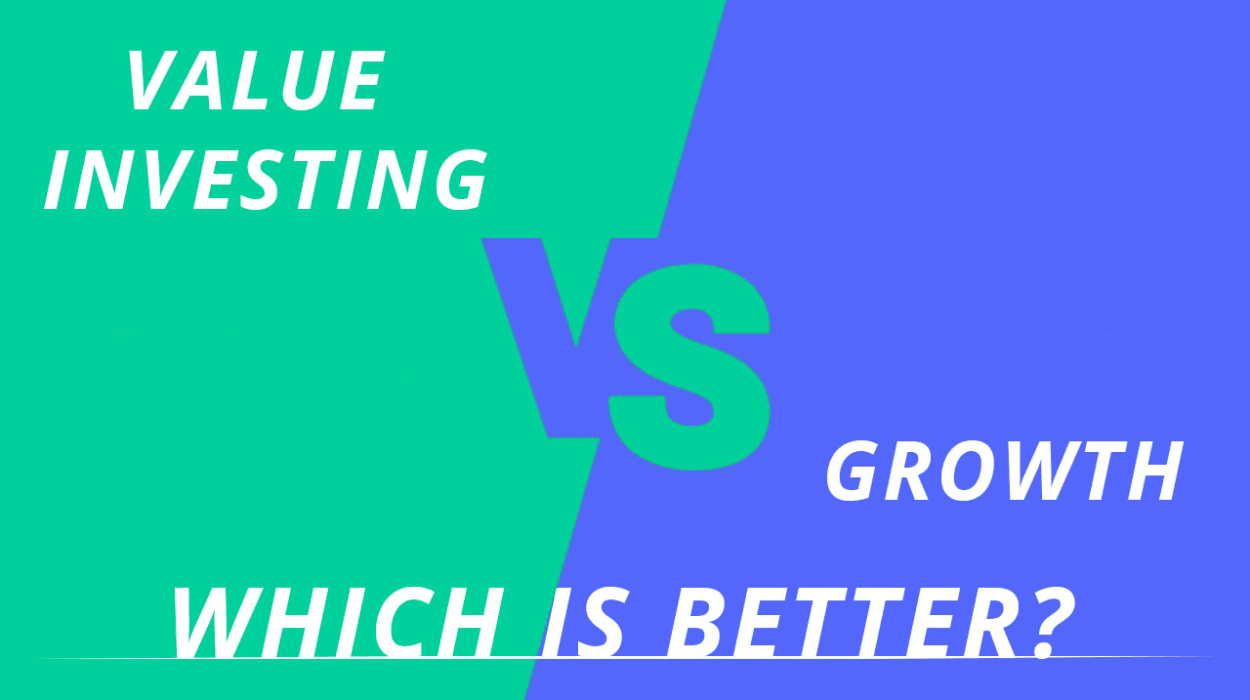Value Investing vs Growth Investing: Investing is a means to grow one’s wealth, and there are various strategies investors can employ to achieve their financial goals. Two of the most prominent and contrasting approaches are value investing and growth investing. These strategies have been popularized by legendary investors like Benjamin Graham and Warren Buffett for value investing and Peter Lynch and Warren Buffett (again) for growth investing. This article aims to provide a detailed comparison of value investing and growth investing, exploring their principles, strategies, advantages, and potential drawbacks.
Value Investing vs Growth Investing
Value Investing
Value investing is an investment strategy that focuses on identifying undervalued stocks in the market. It is grounded in the idea that the market occasionally misprices stocks, either undervaluing or overvaluing them. Value investors aim to buy stocks that are trading at a price lower than their intrinsic value, with the expectation that the market will eventually recognize and correct this mispricing.
Principles of Value Investing:
- Intrinsic Value: Value investors calculate the intrinsic value of a stock by analyzing various financial metrics, including earnings, book value, and cash flow. The goal is to determine the true worth of the company, irrespective of market sentiment.
- Margin of Safety: This is a critical concept in value investing. It involves buying stocks with a significant margin of safety, meaning the stock price is substantially lower than the calculated intrinsic value. This provides a cushion against potential market downturns.
- Long-Term Perspective: Value investing is typically a long-term strategy. Investors hold their positions for years, waiting for the market to recognize the true value of the stock.
- Fundamental Analysis: Value investors focus on fundamental analysis, examining a company’s financial statements, management, competitive position, and industry trends.
Advantages of Value Investing:
- Lower Risk: Buying undervalued stocks with a margin of safety can provide protection against market volatility.
- Steady Returns: Value stocks often pay dividends, providing a steady income stream to investors.
- Disciplined Approach: Value investing encourages a disciplined and rational approach to investing.
Drawbacks of Value Investing:
- Limited Growth Potential: Value stocks may not experience rapid price appreciation, limiting short-term gains.
- Requires Patience: Value investing requires patience, as it may take time for the market to recognize the true value of a stock.
Growth Investing
Growth investing is a strategy that focuses on investing in companies with high growth potential. Unlike value investing, growth investors are less concerned with a stock’s current price relative to its intrinsic value. Instead, they prioritize companies that are expected to experience substantial earnings growth in the future.
Principles of Growth Investing:
- Future Potential: Growth investors prioritize companies that are expected to grow their earnings at an above-average rate compared to the overall market.
- Momentum: This strategy often relies on momentum and market sentiment. Investors believe that growth stocks will continue to rise as long as the company’s growth story remains intact.
- Limited Dividend Focus: Growth companies often reinvest their earnings back into the business, so they typically pay lower dividends compared to value stocks.
- Technical Analysis: Growth investors may use technical analysis to identify entry and exit points based on price trends and patterns.
Advantages of Growth Investing:
- High Returns: Successful growth stocks can deliver substantial capital gains over a relatively short period.
- Portfolio Diversification: Growth stocks can provide diversification to a portfolio heavily weighted toward value stocks.
- Innovation Exposure: Growth investing often involves investing in companies at the forefront of technological and innovative advancements.
Drawbacks of Growth Investing:
- Higher Risk: Growth stocks are often more volatile and susceptible to market fluctuations.
- Uncertain Future: Predicting the future growth of a company can be challenging, leading to potential investment mistakes.
- Potential Overvaluation: Investors in growth stocks may pay a premium for anticipated growth, which can lead to overvaluation.
Key Differences:
- Investment Approach: Value investing prioritizes undervalued stocks based on fundamental analysis, while growth investing targets companies with high growth potential, often based on market sentiment.
- Risk Tolerance: Value investing is generally considered a lower-risk strategy, while growth investing is higher risk due to the potential for price volatility.
- Time Horizon: Value investing is typically a long-term strategy, while growth investing can be both short-term and long-term, depending on the investor’s goals.
- Dividends: Value stocks often pay dividends, while growth stocks may reinvest earnings for future growth.
Conclusion
Value investing and growth investing represent two distinct approaches to building a portfolio and achieving investment goals. While value investing seeks to identify undervalued stocks with a margin of safety, growth investing targets companies with high growth potential. Each approach has its advantages and drawbacks, and the choice between the two ultimately depends on an investor’s risk tolerance, financial objectives, and time horizon. Some investors even choose to incorporate elements of both strategies in their portfolios to strike a balance between value and growth opportunities. Regardless of the chosen approach, thorough research and a disciplined investment strategy are crucial for success in the world of investing.

